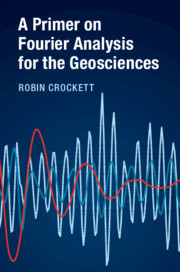Description
A Primer on Fourier Analysis for the Geosciences
Author: Crockett Robin
An intuitive introduction to basic Fourier theory, with numerous practical applications from the geosciences and worked examples in R.
Language: English
Subject for A Primer on Fourier Analysis for the Geosciences:
A Primer on Fourier Analysis for the Geosciences
Publication date: 02-2019
188 p. · 15.1x22.8 cm · Paperback
Publication date: 02-2019
188 p. · 15.1x22.8 cm · Paperback
Approximative price 65.00 €
In Print (Delivery period: 14 days).
Add to cart
A Primer on Fourier Analysis for the Geosciences
Publication date: 02-2019
188 p. · 15.8x23.5 cm · Hardback
Publication date: 02-2019
188 p. · 15.8x23.5 cm · Hardback
Description
/li>Contents
/li>Biography
/li>
Time-series analysis is used to identify and quantify periodic features in datasets and has many applications across the geosciences, from analysing weather data, to solid-Earth geophysical modelling. This intuitive introduction provides a practical 'how-to' guide to basic Fourier theory, with a particular focus on Earth system applications. The book starts with a discussion of statistical correlation, before introducing Fourier series and building to the fast Fourier transform (FFT) and related periodogram techniques. The theory is illustrated with numerous worked examples using R datasets, from Milankovitch orbital-forcing cycles to tidal harmonics and exoplanet orbital periods. These examples highlight the key concepts and encourage readers to investigate more advanced time-series techniques. The book concludes with a consideration of statistical effect size and significance. This useful book is ideal for graduate students and researchers in the Earth system sciences who are looking for an accessible introduction to time-series analysis.
Preface; Acknowledgments; 1. What is Fourier analysis; 2. Covariance-based approaches; 3. Fourier series; 4. Fourier transforms; 5. Using the FFT to identify periodic features in time-series; 6. constraints on the FFT; 7. Stationarity and spectrograms; 8. Noise in time-series; 9. Periodograms and significance; Appendix A. DFT matrices and symmetries; Appendix B. Simple spectrogram code; Further reading and online resources; References; Index.
Robin Crockett is Reader in Data Analysis in the Faculty of Arts, Science and Technology at the University of Northampton. He is a member of the Institute of Mathematics and its Applications (IMA) and the Institute of Physics (IOP) and holds Chartered Scientist Status. He specialises in investigating periodic, recurrent and anomalous features in data, and has led a highly successful short course on Fourier analysis at the European Geosciences Union General Assembly for many years.
© 2024 LAVOISIER S.A.S.



